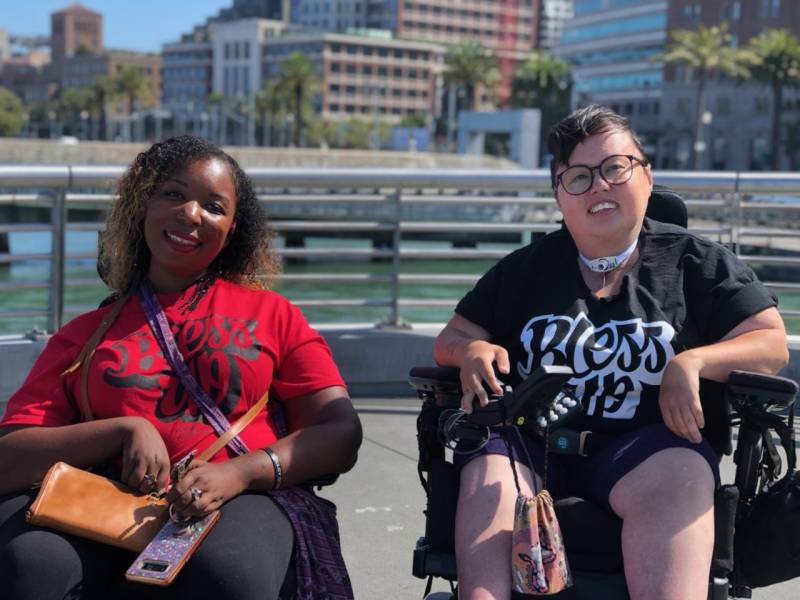Katayama: Stacey Park Milbern died from complications from surgery on her birthday. She was 33. Over the past week, activists in the Bay Area and all over the country have been mourning Stacey. So today we’re remembering her, too. I’m Devin Katayama, welcome to The Bay.
LaVant: She was, a lot of people would say, a leader. She kind of encompassed all of it. You know, sometimes there’s like a lead from the front, lead from the middle, lead from the back. And she was just somehow able to do all of that.
I’m Andraéa LaVant and I was a very, very close friend and also a business partner with Stacey. Stacey grew up in North Carolina, you know, super loved, and she has a brother and sister that love her dearly that I recently got to meet. She grew up in an evangelical Christian home and so dealt with and processed through just her own acceptance.
Southern Roots
Katayama: And so in North Carolina, how did Stacey get so interested in disability justice issues?
LaVant: I think that all of us that are really steeped in the disability justice movement or even the disability rights movement have this, some sort of moment, like epiphany, you know, revelation of like, wow, I didn’t even know that this existed.
Milbern: I walked until about middle school and then started using a manual chair and then scooter and then my high school used a power chair. As strange as it sounds, throughout that whole time, I never really identified as being a person with a disability.
LaVant: So she talks about how she attended an event and she heard Judy Heumann speak who is really considered, kind of, the mother of just the disability rights movement and just the power there.
Milbern: So when I went to that [first conference], I was like, holy crap, I’ve been working so hard my whole life to be like everyone else and I’m still different and I can’t figure out why. And now it all makes sense. Like, I have a disability.
Katayama: What were some of the earliest projects that Stacey worked on?
LaVant: So Stacey started, you know, in kind of the disability space specifically the independent living movement as a teenager. She was one of the co-founders of the North Carolina Youth Leadership Forum, which is a training and opportunity for young people with disabilities. And then, she also had a governor appointed position by 18, the statewide independent living council.
Katayama: How did Stacey come to realize she wanted to move out of North Carolina and come to the Bay Area?
LaVant: So, Stacey, you know, she lived in North Carolina until she was 24. She lived at home because, you know, for so many of us with disabilities that are dependent in terms of care that was provided by her family. And North Carolina also didn’t necessarily have the programs in place, the resources in place, the funding in place to support the life that she wanted to live. The independent living movement really started in the Bay Area and Berkeley and the underlying or overlying piece is that she wanted to build a life of independence.
‘Epitome of Interdependence’
Katayama: So can you tell me about that actual journey? Like, how did she make that happen?
LaVant: Actually, she and a friend did a fundraiser to move. She was the epitome of interdependence. We help each other in order to live. And so when she moved out there, she didn’t have, you know, services in place right away. And so she had friends that were helping with her personal care. She had a friend helping her find an apartment and things of that nature. Yeah, it was a grassroots effort for sure and obviously got to build her her dream.
